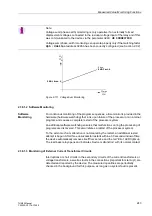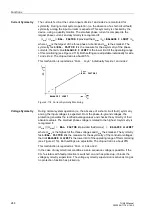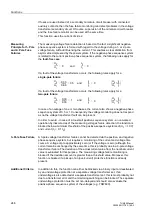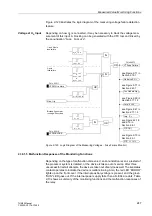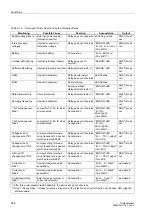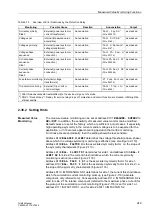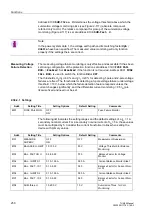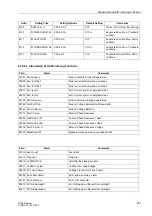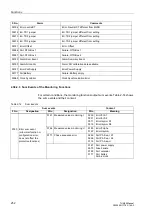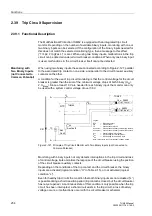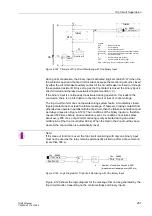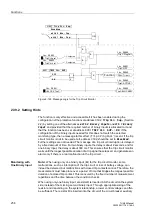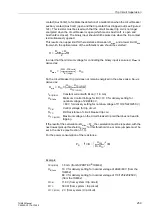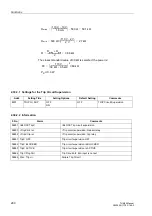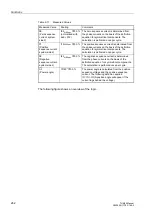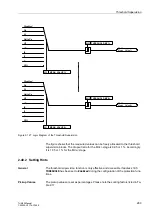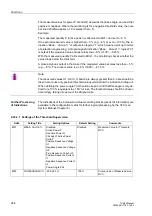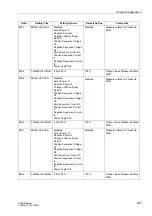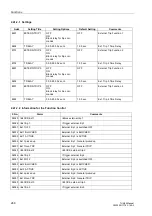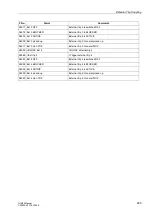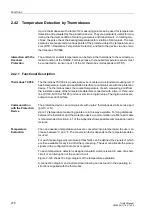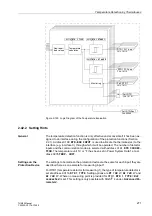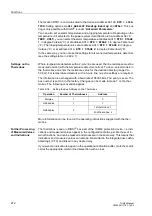
Trip Circuit Supervision
257
7UM62 Manual
C53000-G1176-C149-3
Figure 2-124 Principle of Trip Circuit Monitoring with One Binary Input
During normal operation, the binary input is activated (logical condition “H”) when the
trip contact is open and the trip circuit is intact, because the monitoring circuit is closed
by either the circuit breaker auxiliary contact (if the circuit breaker is closed) or through
the equivalent resistor R. Only as long as the trip contact is closed, the binary input is
short circuited and thereby de-activated (logical condition ”L”).
If the binary input is continuously de-activated during operation, this leads to the
conclusion, there is an interruption in the trip circuit or loss of control voltage.
The trip circuit monitor does not operate during system faults. A momentary closed
tripping contact does not lead to a failure message. If, however, tripping contacts from
other devices operate in parallel with the trip circuit, then the failure annunciation must
be delayed (see also Figure 2-125). The conditions of the binary input are, therefore,
checked 500 times before an annunciation is sent. A condition check takes place
about every 600 ms, so trip circuit monitoring is only activated during an actual
malfunction of the trip circuit (after 300 s). When the fault in the trip circuit has been
cleared, the annunciation is automatically reset.
Figure 2-125 Logic Diagram for Trip Circuit Monitoring with One Binary Input
Figure 2-126 shows the logic diagram for the message that can be generated by the
trip circuit monitor, depending on the control settings and binary inputs.
L
–
L
+
RTC
AuxCont 2
Aux
U
BI
U
St
7UM62
7UM62
TC
CB
Legend:
RTC
— Relay trip contact
CB
— Circuit breaker
TC
— Circuit breaker trip coil
AuxCont1 — Circuit breaker auxiliary contact (NO contact)
AuxCont2 — Circuit breaker auxiliary contact (NC contact)
R
— Equivalent resistor
U
Ctrl
— Control voltage (trip voltage)
U
BI
— Control voltage for binary input
Note: In the figure the circuit breaker is shown closed.
R
Cont 1
FNo.
Note:
If the lock-out function is used, the trip circuit monitoring with only one binary input
must not be used as the relay remains permanently picked up after a trip command
(more than 300 s).
&
Fault cond.
n
n.. .... Number of condition checks (= 500)
>
(measurement repeated every 600 ms)
FNo.
FNo.

